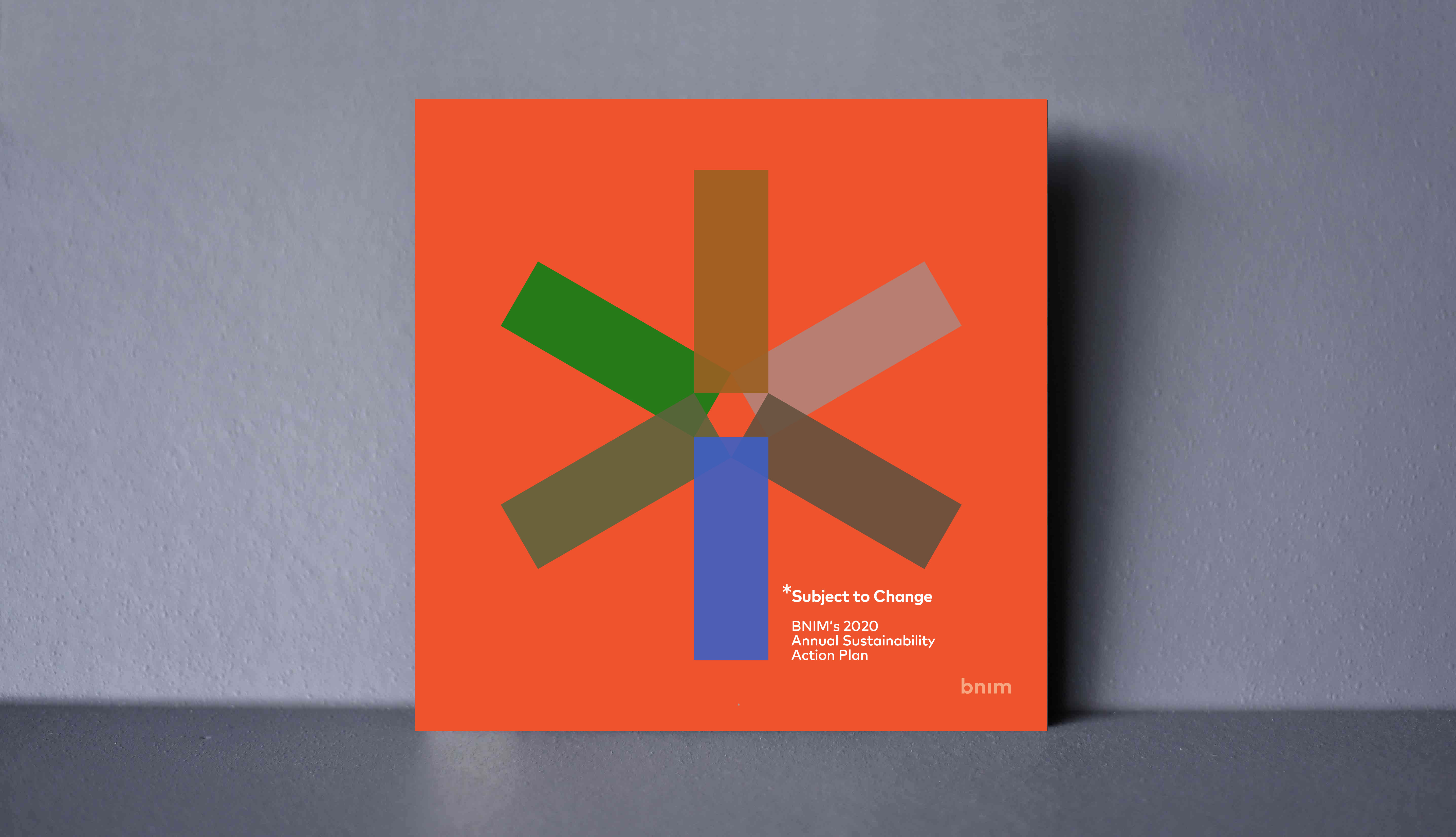*Subject To Change: BNIM's Latest Sustainability Action Plan Report
This Earth Day 2022, BNIM is sharing our latest Sustainability Action Plan, *Subject To Change. This report provides our firm with a deeper understanding of the environmental impact of each of our projects and help us re-examine the ways we are addressing climate justice in our practice, centering on people, human dignity, and equity.
2020 was a year of working through disruption for every level of society. At BNIM, while we shifted to working from home, we continued to engage project teams in implementation of the Sustainability Action Plan, measuring 18 firm-wide metrics across six categories: Energy, Water, Ecology, Wellness, Equity, and Resources. Within each of the six categories is a series of goals by which we seek to measure the success of a given project:
-
Energy - We design to the AIA 2030 Commitment. To address this trajectory, we seek to decrease the total energy use and carbon footprint of the project.
-
Water - We design to conserve potable water and manage storm water in a responsible way.
-
Ecology - We design to protect and benefit site ecology in the presence of human development. We consider the macro and micro scale of the site and not only the anthropocentric world but also the rest of biodiversity.
-
Wellness - A project is only sustainable if people enjoy being in it. We design projects to promote beauty, comfort, health and wellness.
-
Equity - We design to enhance human, social, economic and environmental wellness in our communities. Listening, inclusion, and collaboration are fundamental to promoting equity in the built environment.
-
Resources - We seek to design environments that positively shape the lives of people connected to our work by analyzing the embodied energy, regional climate hazards, life cycle material costs and source streams.

While we adjusted to remote and hybrid modes of work over the past two years, fully engaging teams in the day-to-day work of establishing, updating, and reporting project sustainability goals was not without its challenges, but the framework has resulted in many successes and uncovered new opportunities across our projects.
In our 2020 reporting year, BNIM:
Deepened baseline knowledge about sustainability metrics and emerging topics.
We continued to empower teams with new resources and strategies that were incorporated into ongoing project goals and dialogue with owners, contractors, and consultants.
Improved our impacts in almost every category of firm-wide goals.
We met our firm-wide goals in 12 of our 18 approach metrics, which remains the same as our 2019 “year zero” reporting. However, we increased our project averages in all approach metrics except for two, Spatial Daylight Autonomy and Native Plantings. This tells us that we are successfully making incremental improvements, and that we have more work to do for Energy, Wellness, and Equity improvements - including adjustment to the specific measures for more meaningful project impacts.
Developed broad but meaningful conversations around equity and justice in our practice.
This included a firm-wide dialogue series around equitable practice, development of the Address Initiative, and commitment by the firm to complete our first JUST label.
Grew our understanding of embodied carbon.
Last year, we made a bold commitment to reducing the embodied carbon dioxide emissions across all projects. Through continued industry dialogue, project goal setting, modeling, sharing, and learning from our colleagues, we have begun to integrate strategies for reduction across our design practice. Through updates to our material specifications, encouraging performance improvements, we leveraged project bids as a form of industry advocacy.
We have refined the methods and modeling strategies of our approach metrics to help teams gain better data to use for comparison and decision-making. Realizing that the broad modeling and software knowledge needed for analysis was creating a barrier for implementation, we set about finding ways to consolidate the sources of data into a more manageable approach. We have also worked to integrate the established goals into our Building Information Modeling (BIM) standards and company data consolidation efforts.
BNIM's latest *Subject to Change includes transparent reporting for all projects initiated in 2019 or later as well as firm-wide progress towards goals based on 18 metrics. Project metrics were reported in March - April 2021 and are a snapshot in time of our project portfolio. The BNIM Sustainability Group worked with over 60 designers and staff members spread across our three offices in Kansas City, Des Moines, and San Diego during the spring of 2021 to gather and assess this information.

Three key case studies on The Tom and Ruth Harkin Center at Drake University, Ivy Senior Apartments in San Diego, CA, and the Kansas City International Airport Parking Garage in Kansas City, MO, provide new insights for our practice, specific to the two action plan categories which we identified as needing the most development in our “year zero” Subject To Change 2019 reporting: Equity and Resources.
These projects offer a new strategy, metric, or approach to design that has impacted how we measure progress on other projects. We must use new strategies and ideas, discovered through practice and research, to amplify our success and drive the evolution of the design and construction industry.
The lessons from these projects can guide the further development and refinement of the way we measure our work, reminding us that truly holistic sustainable and regenerative design requires a dynamic approach.


